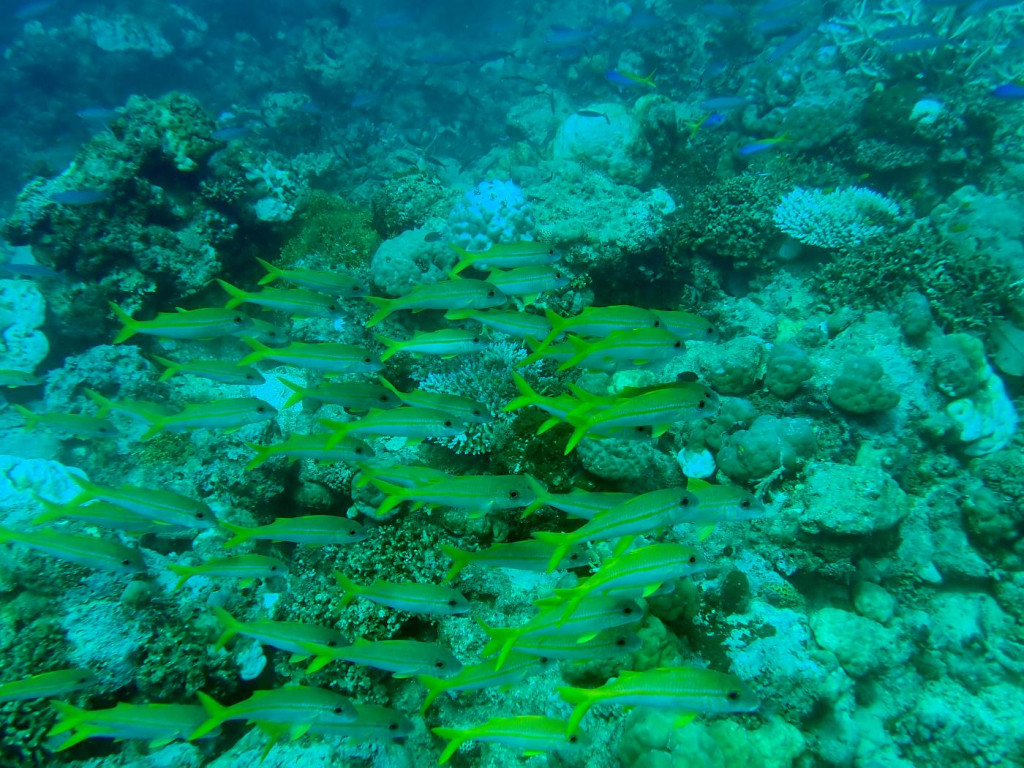Have you ever cried into a diving mask? I did today when we were snorkeling on the reef off Vella Lavella (Solomon Islands). We had visited the village of Leona before and were thrilled to hear that they are thinking of the future and have been protecting their reef for 20 years(!) with no-fishing zones. Additionally they have now created a conservation area in the mountains above the village to save the biodiversity of the primary forest and prevent logging (and as a result erosion that creates sediment and harms coral).
So we went snorkeling in their Marine Protected Area and really, the reef is full of fish! But we were horrified to see that about 95% of the corals are either dead or dying. The thermometer on the camera showed between 31.4 and 31.8°C on the surface and even down at 6 metres. It seems that the location on the W side of Vella Lavella away from currents and in the wind shade of the island means that it’s warmer here than e.g. the Bougainville Strait with its constant current. The hardiest coral cannot survive such temperatures. The villagers are doing everything right, but global warming is ruining all their efforts. At least the many herbivore fish on the reef will keep the surfaces clean so corals can recover and new recruits hopefully settle IF conditions get better–which seems unlikely when I look at the news and see Trump boosting Big Oil, the EU taking back climate regulations and everybody around the world focused on wars and tariffs and their own wallet.
Our ever-growing greed for profit and luxury is ruining the planet with all the emissions its industry and transport produce. The earth is getting hotter and reefs are dying everywhere. And that’s not just a problem for the little fishies who are losing their home and shelter and some villagers who won’t be able to fish. It’s not about spoiled tourists like us who won’t be able to enjoy colourful underwater landscapes anymore.
Reefs provide food for huge coastal populations and act as natural barriers, protecting coastlines from the devastating impacts of storms and waves. “So what?, you may say. “I live far from the shore, I don’t care.” But do you eat fish? Despite covering less than 1% of the ocean floor, coral reefs support 25% of all marine species and act as breeding grounds and nurseries for others–half of the commercially fished species depend at least in one stage of their lives on reefs!
But even if you don’t like fish, you should still care about reefs: The process of calcification, during which coral polyps extract calcium carbonate from the water to build their skeletons, helps sequester carbon dioxide from the atmosphere. They also protect in-shore habitats like seagrass meadows and mangroves, which absorb carbon dioxide from our atmosphere and store it up to 50 times more efficiently than terrestrial forests.
Wake up, people! The reefs are getting heated to death due to global warming, it’s our fault and we’re all affected.
Plenty of fish that are not scared of divers, the no-fishing-zone is clearly respected around Omauva Island.
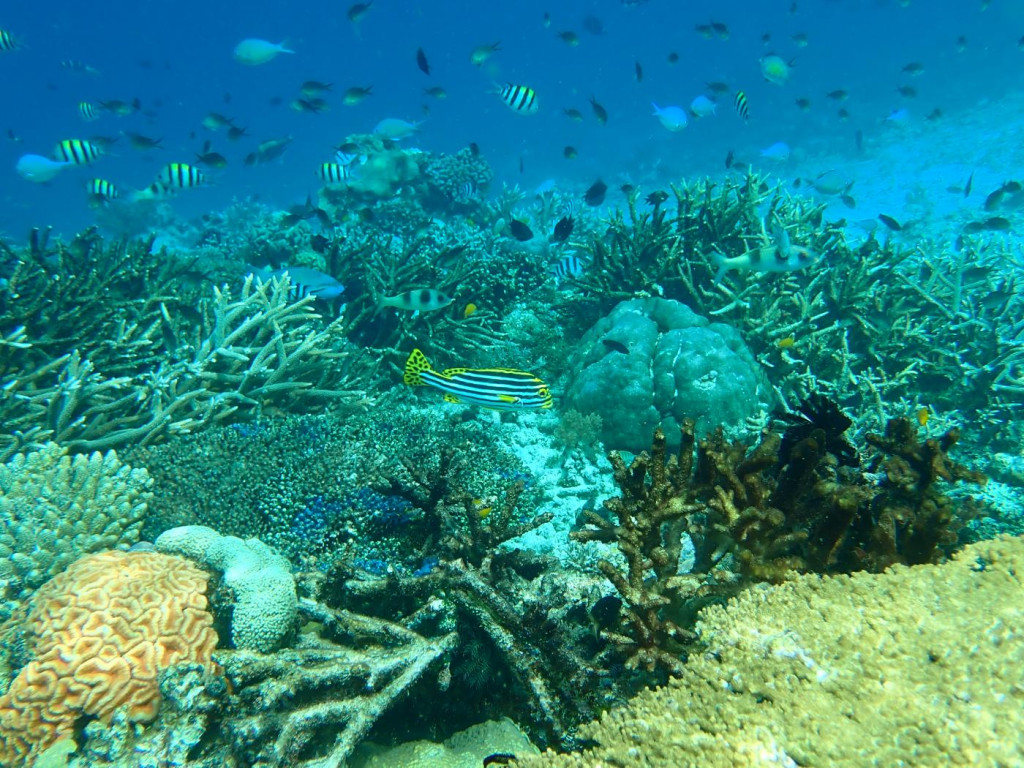
Where will all the little fish hide once the coral’s gone?
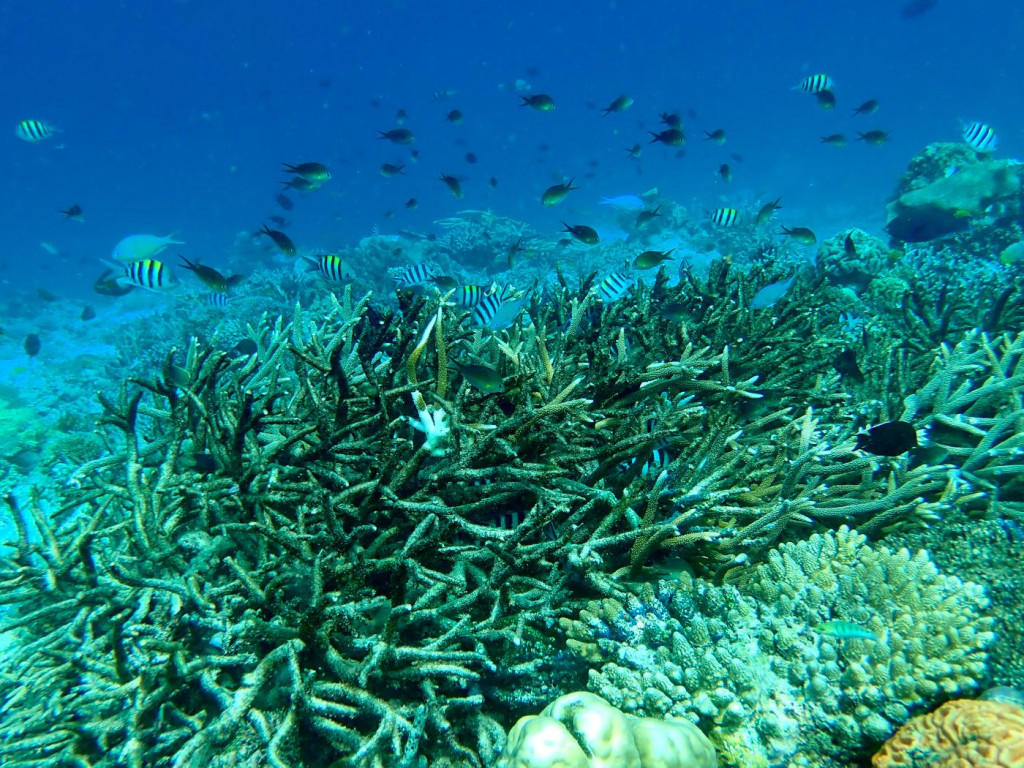
Even deeper down bleached staghorn and dead softcoral that looks like overboiled cauliflower…
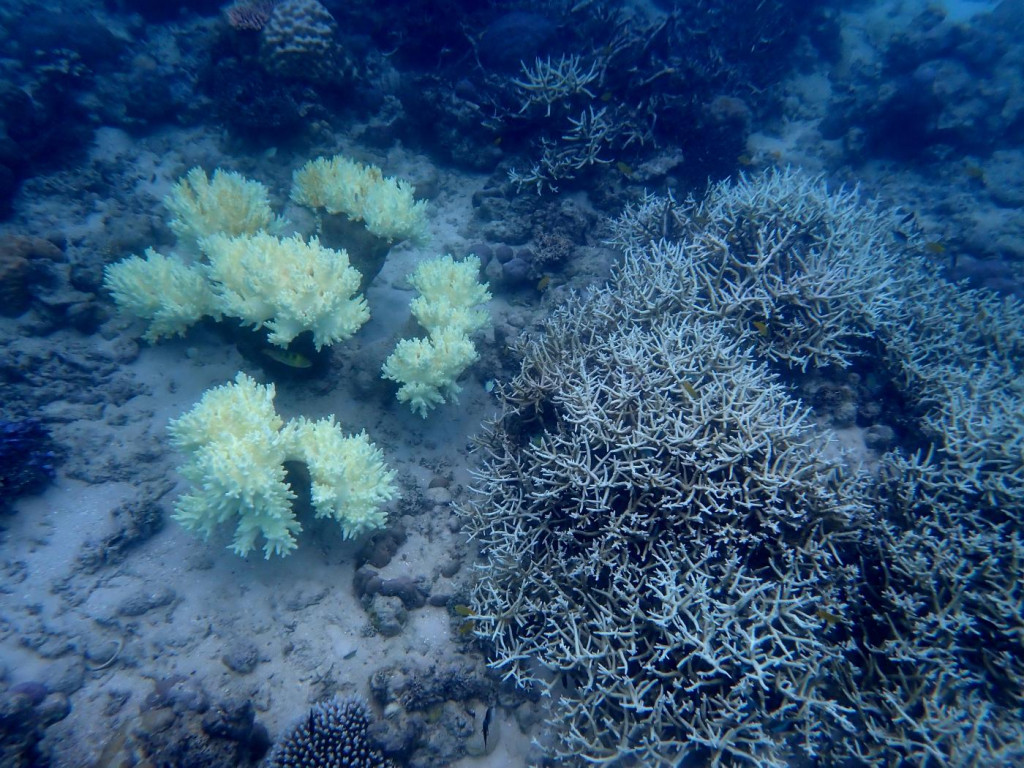
Parts of the tablecoral are badly bleached, the rest is already dead
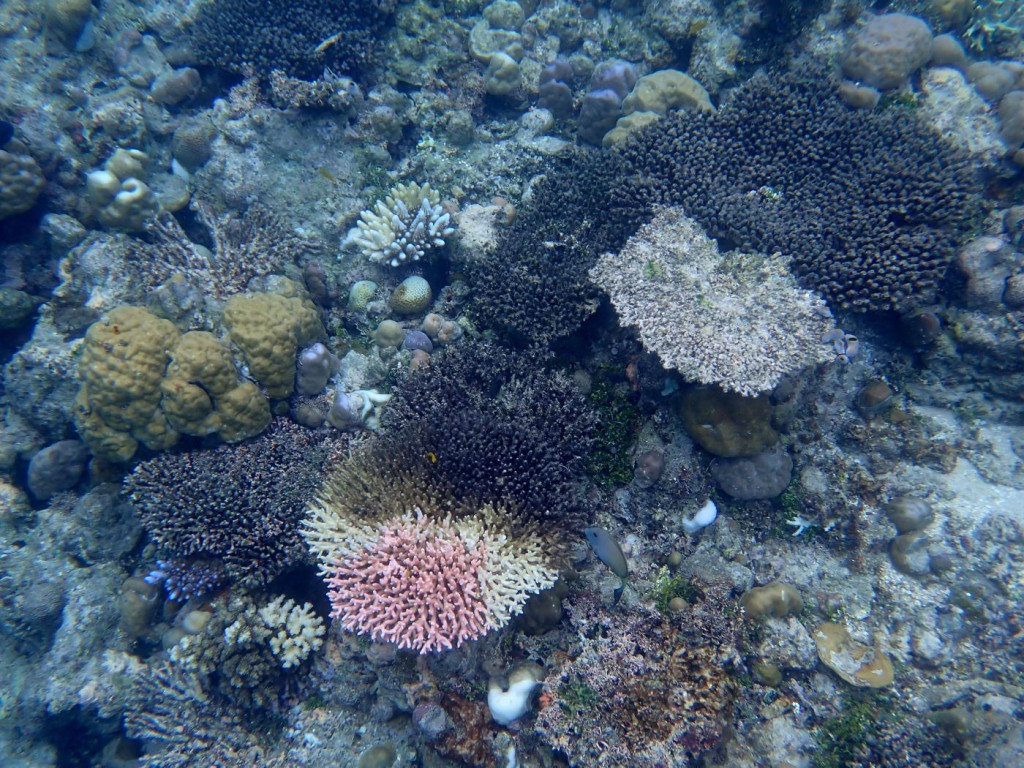
All types of corals are affected
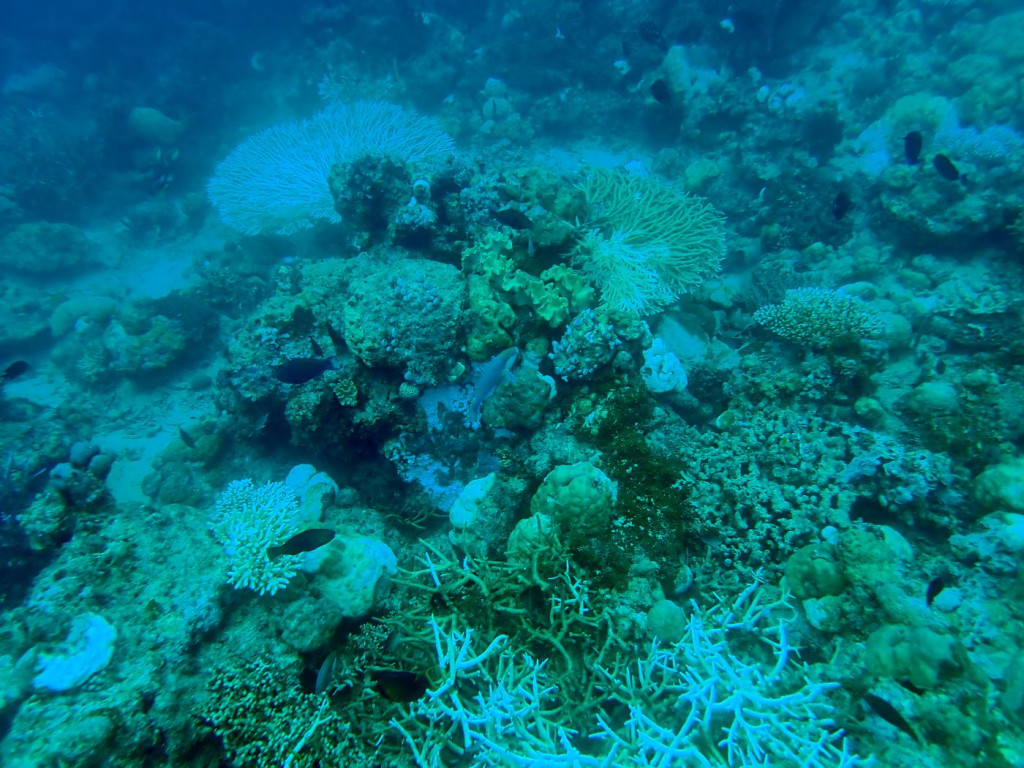
Just a skeleton left
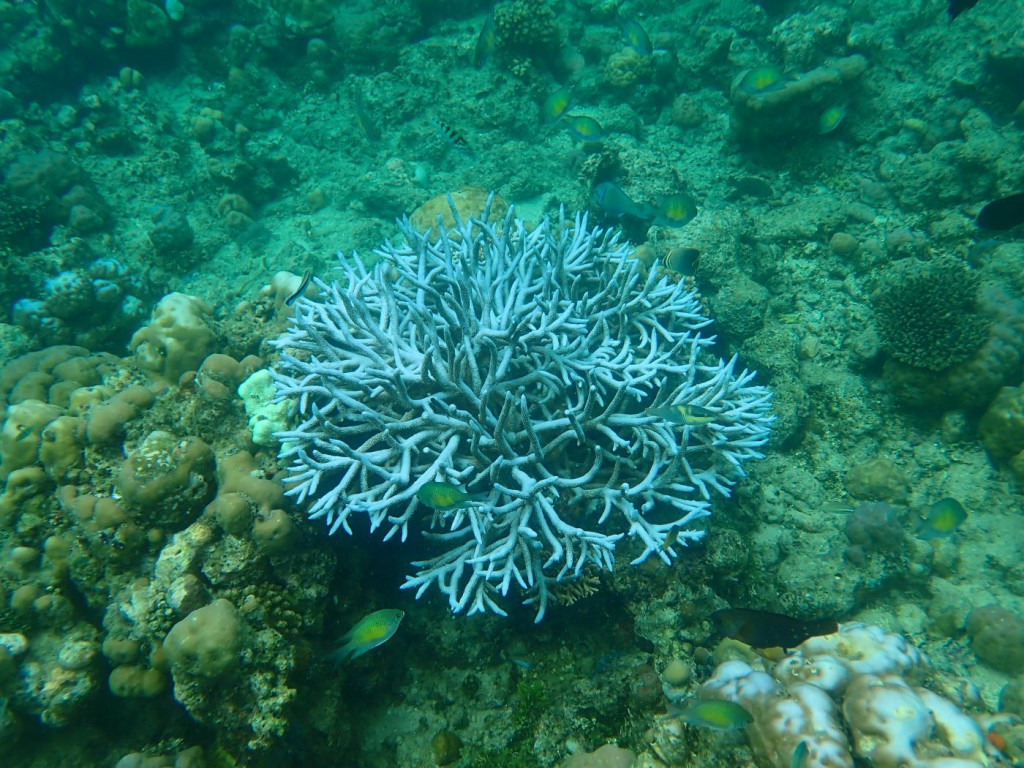
At first glance the pastel colours look nice, but it’s a form of bleaching
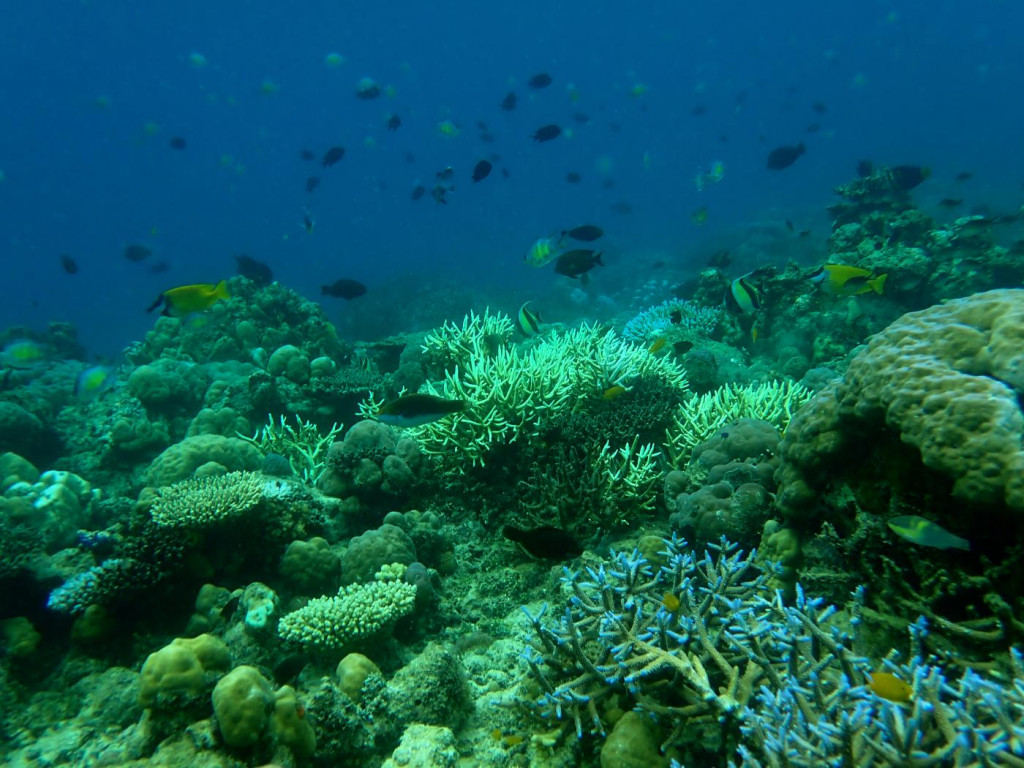
Big swarms of fish thanks to the villager’s conservation efforts…
